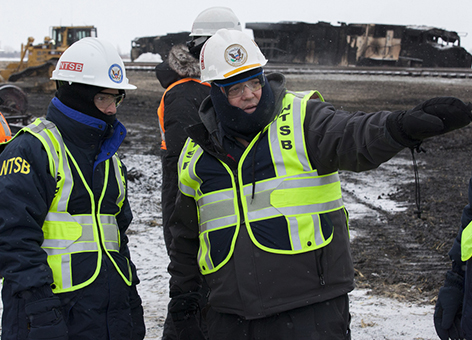Mapping Risks to Sensitive Habitats from Oil Trains
Like many regions of the United States, the Pacific Northwest has seen a massive surge in transportation of crude oil by rail in recent years. Hydraulic fracturing (fracking) has helped increase extraction of Bakken crude from Montana and North Dakota, changing not only what the U.S. energy industry produces, but how it transports it as well, with rail as the rapidly growing mode of transport. Many of these oil trains carry Bakken crude, which is highly volatile and potentially more flammable than traditional heavy crude oil. However, it is not classified—and therefore shipped—differently than traditional, less volatile oils, and has been involved in numerous high-profile accidents and explosions in the last year. Trains carrying Bakken crude oil travel through or near sensitive habitats, waterways, and cities, including Seattle, Washington. Much of Washington's rail network runs adjacent to rivers and lakes, making them vulnerable to train car discharge, derailment, and explosions. Currently, regulations about the amount, type, or location of crude shipments entering each state and sharing of this information are inconsistent. This information gap impacts the scientific and response team's ability to prepare for and respond to incidents, which may involve this potentially more dangerous type of crude. Continuing the work begun by a previous collaboration between OR&R and the University of Washington, OR&R's Emerging Risks project is using spatial analysis (Geographic Information Systems or GIS) to illustrate the intersection of railroads and sensitive habitats and species. The OR&R Assessment and Restoration Division's Nicolas Eckhardt and Ben Shorr have been working with ARD Spatial Data Branch intern and University of Washington student Rachel Fox to develop a proximity analysis summarizing data on railroad alignment, quantities and types of oil and gas transported, and nearby sensitive habitats and species. This team is using near-shore marine and freshwater data from Washington and Oregon as well as federal data sources to show potential resources at risk from a railroad incident, and to support potential incident response and damage assessment activities. Supporting data and the modeled results will be available in the interactive online mapping tool, Pacific Northwest ERMA® (Environmental Response Management Application). For more information, contact Rachel Fox, Nicolas Eckhardt, or Ben Shorr. Go back to OR&R Weekly Report.

